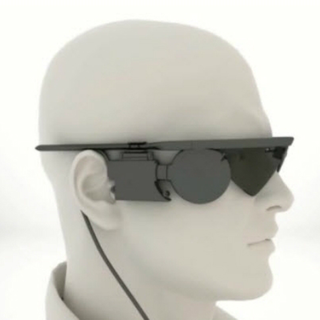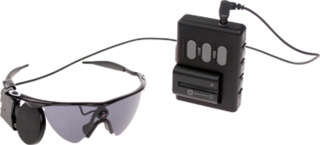How an FDA-Approved Retinal Prosthesis Came To Be
Science Education
The Argus II Retinal Prosthesis System was recently granted market approval by the U.S. Food and Drug Administration (FDA), which marks a significant milestone in the development of a therapy that has spanned more than 20 years.

The Argus II Retinal Prosthesis System was recently granted market approval by the U.S. Food and Drug Administration (FDA), which marks a significant milestone in the development of a therapy that has spanned more than 20 years. It was at Johns Hopkins University, in the early 1990s, that I, along with Drs. de Juan, Humayun and Dagnelie, with some early support from FFB, carried out the very first short-term (one hour or so) experiments with human volunteers. We demonstrated that electrical stimulation of the retina could, indeed, produce spots of light perceived by blind patients.
When the first patient, Harold Churchy, saw two distinct spots of light, I was hooked. I recall the sheer amazement we all shared in those early days. But if I could go back and talk to my younger, less gray self, I would tell him, ”You ain’t seen nothing yet!”
By 1998, our work had demonstrated that a retinal prosthesis (an implantable long-term device that uses electricity to stimulate the retina) could potentially restore vision in people with advanced retinitis pigmentosa (RP). So I co-founded Second Sight Medical Products, Inc., to develop the prosthesis. In those early days, there were many skeptics, some claiming it could never work because the retina was too sick, others that the technology was not up to the task.
Backed by a small group of devoted investors, we were nevertheless convinced it could be done. There were plenty of challenges along the way, but, in the end, with more than $200 million in private and public investment, we succeeded.
In 2002, we started our first clincal trial with the Argus I, a 16-electrode implant based on an established cochlear implant platform. We intended to show that we could stimulate the retina for years without damaging it. (There was some fear that continuous electrical stimulation of the retina might ”burn it out.”)

I recall, vividly, the day we turned on the device in our first patient – and then held our breath as we pointed Harold in the direction of the letter “L” projected on a wall. At first, he said, ”No – nothing, nothing, nothing yet.” And then, ”There’s something! A line… and another line… they look like an ‘L.’”
As much satisfaction as we felt that day, in hindsight, it was just another milestone. We weren’t expecting to show utility with Argus I. But, as it turned out, even with just 16 electrodes (or pixels), the level of vision was useful for our blind volunteers. It helped them navigate, locate objects and, in one case, shoot baskets with a grandson. Patients asked us to commercialize the first implant, but the surgery was too invasive – taking eight hours and requiring an implant behind the ear and in the eye.
In 2007, we began the trial for Argus II, a 60-electrode implant designed from scratch to make it smaller, easier to implant and visually sharper. The study spanned four countries and 30 patients, including 14 in the United States. We had some adverse events early on, but, thankfully, they were treatable and we learned enough to greatly reduce their occurrence going forward.
I sincerely want to thank all of the patient volunteers from both studies for being incredible pioneers who braved the unknown, with no guarantee of a reward. Without such generous souls, medical science would not be able to advance.
Ultimately, the results of the Argus II trial, which have been published in the journal Ophthalmology, supported market approval in Europe in 2011. In September 2012, an FDA panel of 22 experts voted unanimously in favor of recommending the Argus II for approval, and now the FDA has done so.
With FDA approval, the Second Sight team (now 100 strong) feels a tremendous sense of accomplishment, as if we’ve reached our final destination. But, in fact, it’s just another milestone. Preparing to make the Argus II available in the United States later this year, we continue to improve on the system’s performance and ease of use. The system was designed so that improvements can be achieved through software updates, as with a cell phone or computer.
Twenty-odd years ago, when I embarked on this work to restore vision in blind people, I knew it was a journey that could fill many lifetimes. Although it’s not yet over, we, along with our patient partners and valuable organizations like FFB, are enjoying the journey. Even more important, we are changing the lives of people who previously had no options.
Images courtesy of Second Sight Medical Products, Inc.




